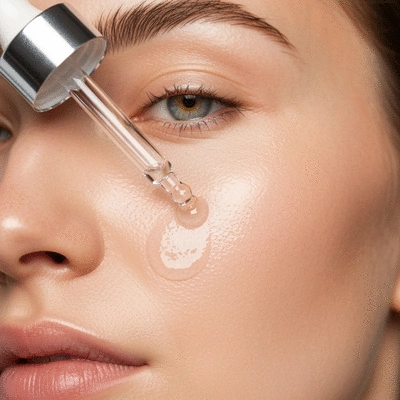Niacinamide or Salicylic Acid for Acne?

Did you know that the right combination of skincare ingredients can transform your routine? Understanding the roles of niacinamide and salicylic acid can empower you to manage dry, acne-prone skin effectively. Let’s explore these powerhouse ingredients!
What You Will Learn
- Niacinamide Benefits: Strengthens the skin barrier, retaining moisture and reducing dryness.
- Anti-inflammatory Properties: Niacinamide soothes redness and irritation, aiding in acne management.
- Hyperpigmentation Reduction: Helps diminish dark spots and promote an even skin tone.
- Salicylic Acid Exfoliation: Deeply exfoliates pores to prevent acne, but should be used cautiously on dry skin.
- Dry vs. Oily Skin: Salicylic acid can be more drying for those with dry skin, necessitating careful product selection.
- Consultation Importance: Seeking professional advice can tailor your skincare for optimal results.
Niacinamide vs. Salicylic Acid: Benefits for Dry, Acne-Prone Skin
This comparison highlights the primary benefits and considerations for using Niacinamide and Salicylic Acid, especially for individuals with dry and acne-prone skin, summarizing key insights from the article.
Niacinamide (Vitamin B3)
Primary Role: Strengthens skin barrier, anti-inflammatory.
- Enhances ceramide production for moisture retention.
- Reduces redness and irritation.
- Fades dark spots and evens skin tone.
- Less drying, suitable for dry skin.
Salicylic Acid (BHA)
Primary Role: Exfoliates pores, treats acne.
- Penetrates deep into pores to clear impurities.
- Prevents clogged pores, reducing breakouts.
- Oil-soluble, effective for blackheads/whiteheads.
- Can be drying for dry skin; use judiciously.
Understanding the Role of Niacinamide and Salicylic Acid in Skincare
As we navigate the journey of managing dry, acne-prone skin, understanding the ingredients in our skincare products can be truly empowering. Two standout players in this arena are niacinamide and salicylic acid. Both have unique properties that can significantly enhance your skincare routine, but how do they work? Let's break it down!
What is Niacinamide and How Does it Benefit Dry Acne Skin?
Niacinamide, also known as vitamin B3, is a powerhouse ingredient that offers a myriad of benefits for dry acne skin. By strengthening the skin's barrier, it helps retain moisture and combat dryness, which is essential for those of us dealing with dual skin challenges.
- Skin Barrier Strengthening: Niacinamide enhances the production of ceramides, helping to fortify the skin's natural barrier. Research published in the Journal of Clinical and Aesthetic Dermatology highlights its role in improving skin barrier function.
- Anti-inflammatory Properties: It reduces redness and irritation, making it an excellent choice for those battling acne. The American Academy of Dermatology recognizes niacinamide's soothing effects.
- Hyperpigmentation Reduction: This ingredient helps in evening out skin tone and fading dark spots.
Exploring Niacinamide's Role in Skin Barrier Strengthening
One of the most important roles of niacinamide is its ability to strengthen the skin barrier. When the barrier is intact, it locks in moisture and protects against environmental stressors. This is particularly vital for individuals with dry acne skin since a strong barrier can lead to fewer breakouts and greater hydration.
Anti-inflammatory Properties of Niacinamide for Acne Management
Niacinamide’s anti-inflammatory properties make it a great ally in acne management. It helps soothe inflamed skin and can even reduce the severity of breakouts. It’s like giving your skin a comforting hug when it needs it most!
Niacinamide's Impact on Hyperpigmentation and Skin Tone
Another remarkable aspect of niacinamide is its ability to diminish hyperpigmentation. If you’ve struggled with post-acne marks, incorporating niacinamide into your routine can promote a more even skin tone, boosting your confidence along the way. Who wouldn’t want that?

How Salicylic Acid Works and Its Effectiveness for Acne Treatment
Now, let’s turn our focus to salicylic acid. This beta hydroxy acid (BHA) is well-known for its effectiveness in treating acne. It works by penetrating deep into the pores, helping to exfoliate and clear out impurities. For those of us with dry acne skin, understanding how salicylic acid interacts with our skin type is crucial. Studies, such as those found in the NCBI database, confirm its efficacy as a peeling agent.
- Exfoliating Power: Salicylic acid gently exfoliates the skin, preventing clogged pores and reducing the occurrence of acne.
- Oily vs. Dry Skin Impact: It can be more drying for dry skin types, so it should be used judiciously.
- BHA Benefits: BHA is oil-soluble, making it effective for deep pore cleansing.
The Exfoliating Power of Salicylic Acid for Clogged Pores
The primary function of salicylic acid is its ability to exfoliate dead skin cells, which is vital for keeping pores clear. This helps prevent breakouts, especially for those who are prone to clogged pores. However, if you have dry skin, it’s important to pair it with hydrating products to maintain balance.
Impact of Salicylic Acid on Oily Skin vs. Dry Skin
While salicylic acid can work wonders for oily skin by keeping excess sebum in check, it can be harsh on dry skin types. If you find your skin feeling tight after using products with salicylic acid, it may be a sign that you need to adjust your routine. Remember, hydration is key!
Understanding BHA and Its Role in Pore Cleansing
As a BHA, salicylic acid is unique in that it can penetrate the lipid barrier of the skin. This makes it particularly effective for deep pore cleansing, allowing for a thorough exfoliation that can help clear out blackheads and whiteheads. It’s all about keeping our skin clear and healthy!
Pro Tip
When incorporating niacinamide and salicylic acid into your skincare routine, consider using them at different times of the day. For instance, apply niacinamide in the morning to boost hydration and strengthen your skin barrier, while saving salicylic acid for the evening to gently exfoliate and unclog pores overnight. This strategy can enhance the benefits of both ingredients without overwhelming your skin!
Frequently Asked Questions About Niacinamide and Salicylic Acid
Can I use niacinamide and salicylic acid together for dry, acne-prone skin?
Yes, you can use them together, but it's often recommended to apply them at different times of the day (e.g., niacinamide in the morning, salicylic acid in the evening) to minimize potential irritation, especially for dry and sensitive skin.
What are the primary benefits of niacinamide for acne-prone skin?
Niacinamide strengthens the skin barrier, reduces redness and inflammation, and helps to fade hyperpigmentation (dark spots) caused by acne, promoting a more even skin tone.
How does salicylic acid help with acne, and is it suitable for dry skin?
Salicylic acid is a BHA that exfoliates deeply within pores, clearing out impurities and preventing clogs. While effective for acne, it can be drying for dry skin, so it should be used cautiously, often paired with hydrating products, or used less frequently.
Why is skin barrier strengthening important for dry, acne-prone skin?
A strong skin barrier locks in moisture and protects against environmental irritants, which is crucial for dry skin. For acne-prone skin, a healthy barrier can lead to fewer breakouts and better overall skin health.
Should I consult a dermatologist before starting new skincare ingredients?
Yes, consulting with a dermatologist is always recommended, especially if you have sensitive skin, persistent acne, or are unsure how to incorporate new active ingredients like niacinamide and salicylic acid into your routine. They can provide personalized advice and product recommendations.
Summarizing Key Insights on Using Niacinamide and Salicylic Acid
As we wrap up our discussion on Niacinamide and Salicylic Acid, it's essential to reflect on how each ingredient can fit into your unique skincare routine. Everyone's skin is different, and understanding the nuances of your personal skin needs is vital when choosing the right products. Do you find yourself battling dryness and acne simultaneously? It’s a common challenge, and the right ingredient can make a world of difference!
Ultimately, the key is finding a balance. As a dermatologist, I often see patients who have tried one product after another without considering their specific skin type and treatment goals. Before diving into new products, take a moment to evaluate your skin's needs. Are you looking to reduce redness and irritation, or are you primarily focused on clearing clogged pores? Let's explore some steps you can take to make informed decisions!
Final Thoughts on Choosing the Right Ingredient for Your Skin Type
When it comes to selecting the right ingredient for your skincare routine, consider the following factors:
- Skin Type: Identify whether you have dry, oily, or combination skin.
- Specific Concerns: Are you dealing with breakouts, hyperpigmentation, or sensitivity?
- Product Formulation: The type of product (serum, cream, etc.) can impact your skin's response.
- Consistency: How often can you realistically use the product without irritation?
By focusing on these aspects, you'll be better equipped to choose between Niacinamide and Salicylic Acid, or even a combination of both! Remember, skincare should enhance your natural beauty, not add to your frustrations.
Encouraging a Balanced Skincare Approach
A balanced skincare routine is not just about the products you choose. It’s also about listening to your skin and adapting as needed! If you're new to these ingredients, start slowly. Incorporate them one at a time to observe how your skin reacts. It’s a journey, and I encourage you to embrace it with patience and enthusiasm!
Implementing Feedback and Adjusting Your Skincare Routine
Be mindful of how your skin responds to new products. Here are some tips for adjusting your routine:
- Monitor Reactions: Keep track of any redness, irritation, or breakouts.
- Consult with Professionals: Don’t hesitate to seek advice from a dermatologist like me!
- Adjust Frequency: You may need to use these ingredients less frequently at first.
- Stay Hydrated: Always pair exfoliating ingredients with adequate hydration to maintain balance.
By actively monitoring and adjusting your routine, you can find what truly works best for your skin.

Taking the Next Steps: Consultation and Product Selection
If you're feeling overwhelmed by options or unsure about what to try, a consultation with a dermatologist can be invaluable. At Dry Acne Solutions, I’m here to help guide you through product selections tailored to your specific needs.
Additionally, consider starting with a patch test for any new product. This simple step can help you avoid potential adverse reactions, allowing you to focus on achieving that healthy, clear skin you deserve!
Addressing Common Skin Care Myths Surrounding Acne Treatments
Lastly, let’s debunk a few common myths surrounding acne treatments:
- Myth 1: All acne treatments dry out the skin excessively.
- Myth 2: You can't use acne treatments if you have dry skin.
- Myth 3: Combining treatments is always harmful.
- Myth 4: Natural products are always better than chemical ones.
Understanding these myths is crucial in navigating the world of skincare. Remember, the right treatment can help you manage dry, acne-prone skin effectively without sacrificing hydration. Let’s continue this journey towards achieving balanced, healthy skin together!
Recap of Key Points
Here is a quick recap of the important points discussed in the article:
- Niacinamide Benefits: Strengthens the skin barrier, reduces redness and irritation, and helps with hyperpigmentation.
- Salicylic Acid Effectiveness: Exfoliates and unclogs pores, but should be used cautiously on dry skin to avoid excessive dryness.
- Finding Balance: Tailor your skincare routine based on your specific skin type and concerns, considering how ingredients interact.
- Monitor Reactions: Always observe how your skin responds to new products and consult professionals as needed.
- Hydration is Key: Pair exfoliating ingredients with adequate hydration to maintain skin moisture and health.









